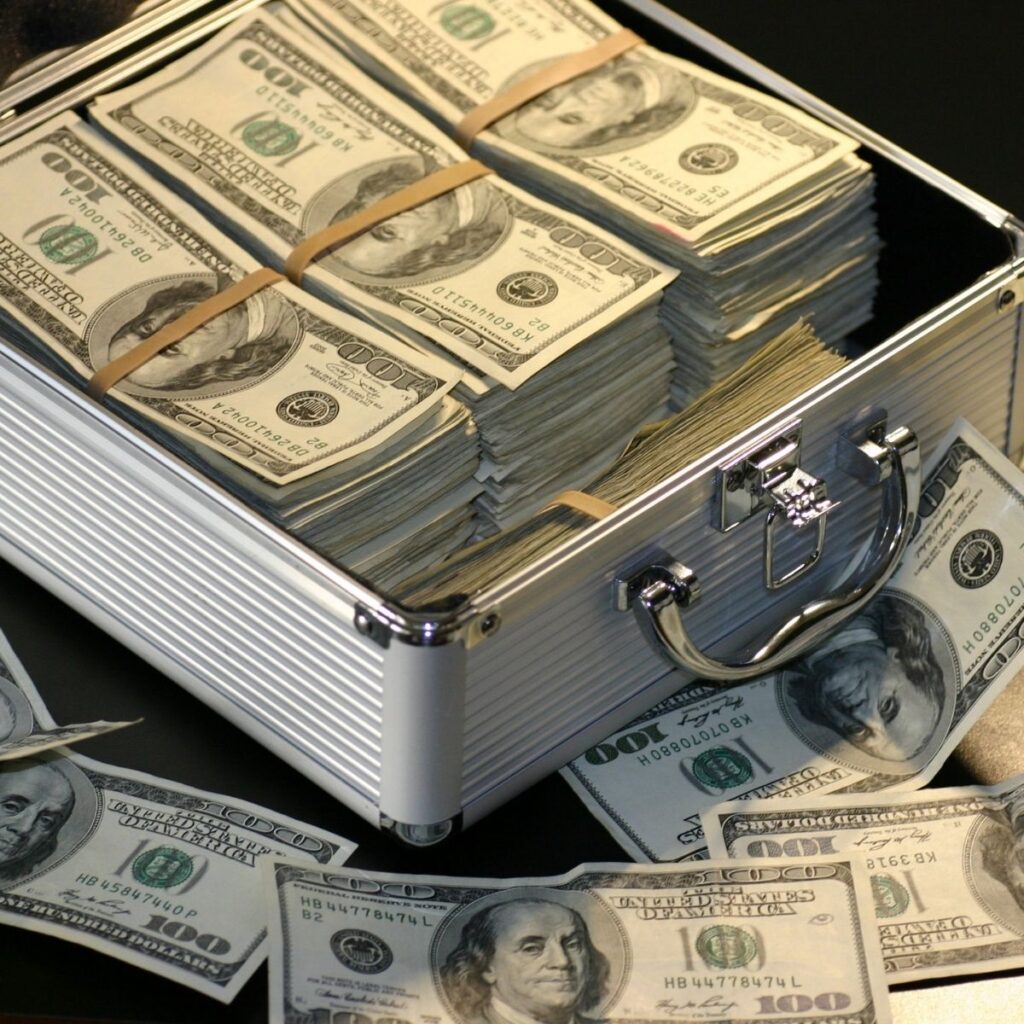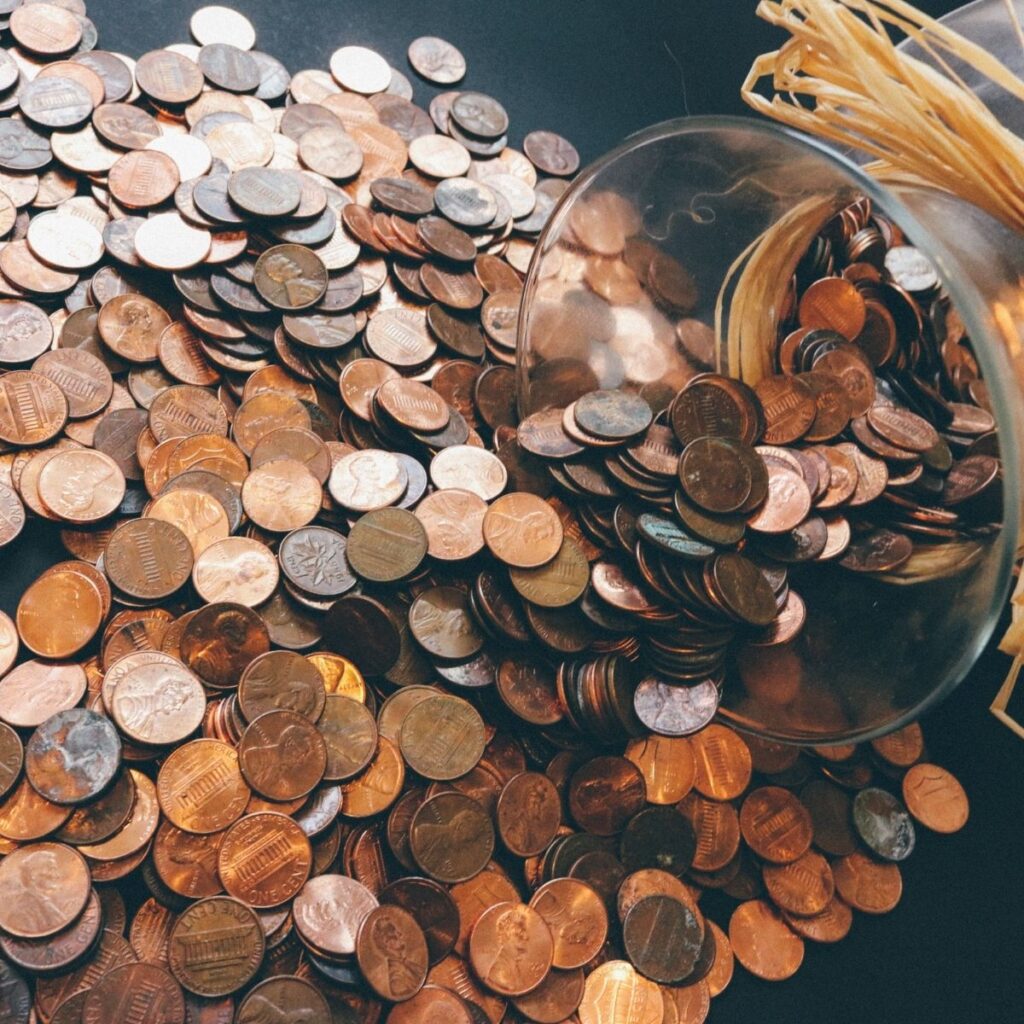Money saving charts can be a great way to save money, and they are also very easy to follow. It’s never too late to make yourself a money saving chart.
You can start at the ending of a year, the beginning, or anytime to start saving money.

If it is tough for you to save money, you are not the only one! So many people struggle with saving money every year according to CNN.
Saving money is the best way to create a secure future. You won’t have credit card debts or go into an emergency needing cash. A good savings account will provide some much-needed financial security!
Money saving charts are a great way to save money. There is money to be saved, and money saving charts are the easiest and most fun way to go about it. You can start your money saving chart at any time, but why not start today?
Related: Sinking Fund Categories
52 Week Savings
Save a small amount of money each week for 52 weeks for this money saving chart. This is a great way to save money because you start with $1 and work your way up. Then, every week, add an extra dollar.
All it takes is one extra dollar each week, and by the end of the year, you’ll be on track for a healthy savings account with a nice starter amount of $1,378!
And you can tweak it to your situation. Maybe start with $5 and add an extra dollar each week (this gets you $1,586 a year). Push yourself to the limit and get some money saved!
Try this 52 week challenge!

Emergency Savings
Save an amount that will fit in your budget each month or each time you get paid for emergencies. You should have at least $1,000 in your emergency fund, but it is always helpful to have more.
26 Week Savings
Like a 52-week savings chart, this savings plan allows you to save up your money even faster. With this plan, you’ll be able to save $1,365 in just six months rather than a year.
Basically, you’ll start by saving $40, then increase it by $1 every week. So in week 26, you’ll save $65. You’ll have $1,365 when you finish. And even more if you’ve invested it along the way!

Spare Change Savings
With this money saving chart, you just collect all of your loose change! Search your house and car and save back any change you receive back from using cash.
Fill up a large jar with all of your change, and once it’s full, you can take it to a bank to exchange your coins for paper money or deposit it all into your savings account.
There is no set dollar amount you are saving here, it just takes diligence to put all your extra change and dollars in a jar.
Keep a notebook next to the jar and write in how much you add to the jar every time and keep a running total.
Saving for Milestones
Maybe you want to pay off your student loans or save up for a down payment on your first home. No matter what milestone you are saving for, a money saving chart to track your progress towards reaching that milestone is very motivating.

What is The 10k Money Challenge?
The 10k Money Challenge is designed to help people achieve financial independence (and better wealth management) by saving a goal amount of $10,000 over the span of one year.
The 10k Money Challenge was created with a goal in mind: To be financially independent and have money that’s saved instead of being spent on unnecessary items.
To save $10,000 in a year, you will need to save about $833 each month. This means you will need to save at least $193 per week.
If you would rather track your progress by what you can save each day, you’d need to save about $28 daily. It’s easy to make an extra $28 in a day. Check out some of these ideas:
- Make Money Online Without Blogging
- Legit Surveys for Cash
- Mystery Shopper Jobs
- Get Paid to Read Emails
- How to Make Instant Money
- Apps to Sell Photos
- Generate Passive Income
You can also save $28 a day using some of these awesome ideas:
- 100+ Simple Ways to Save Money
- 25+ Frugal Living Tips
- How to Live Cheap and Save Money
- 15 Creative Ways to Save Money
- 10+ Money Saving Challenges
Think about all the things that you might do with ten grand! This particular money challenge isn’t just about saving money; it’s about becoming aware of what you really need and want in your life when it comes to finances.
Are your purchases realistic? Do they align with your values? The idea here is to start living mindfully, contemplating what purchasing decisions mean to yourself and those around you, now and well into the future.
If you’re looking to save a big chunk of money in a short amount of time, the 10k Money Saving Challenge is perfect for you. All it takes are a few dollars every day, and by the end of 52 weeks, you will have a nice-sized nest egg.

What’s the 50 30 20 Budget Rule?
The 50/30/20 rule is a great way to manage your money easily and effectively. The basic idea behind this method of dividing up spending categories into needs (50%), wants (30%), and 20% is left for savings or paying down debt.
When it comes to the 50 30 20 Budget rule, 50% of your income should be spent on the necessities: food, housing, transportation, utilities, childcare costs if applicable.
30% of your money can go towards anything else you deem necessary such as entertainment, gifts, hobbies, and other fun items that make your life more enjoyable. The last 20% should go towards savings and paying off any debt you may have.
The 50-30-20 budget rule is a common financial planning strategy that many people use to manage their money and create an effective, long-term saving plan.
Most of your money should be spent on necessities like food, housing, and transportation, while about 30% can be sent on wants, and the rest is for savings and paying down debts.
I HIGHLY recommend cutting the 30% down to closer to 15% so you can save more and pay off more debt.
You may not have as much money left over as with a stricter budget plan, but you will be able to save more and spend less time stressing about money. This is a great way to get started saving up some cash for those rainy days ahead!

What Is The Best Money Saving Method?
It’s best to have a plan in place before you start saving money because you might not know the best method to use. Whether you want to put away the money for an emergency or a rainy day or invest it so that it can grow, there are a few things you need to know first so that you can make the best decision possible.
Many people want to save money to use it for bigger and more expensive goals. Many very effective saving strategies are appropriate for different situations. Still, it’s best to be realistic about what will work best for you.
Here are some tips on how best to save money and why making that goal happen is well worth your time!
Savings Account: This is a good idea if you’re unsure how long you’ll need your savings before spending it. If this is the best option for you, consider opening up an online high yield savings account to earn the most interest.
Investing: When choosing investments early on, make sure they have low fees and adopt an asset allocation based on your risk tolerance level because stocks can go up quickly but can also come down very quickly. I always recommend investing in index funds instead of individual stocks.
You may also want to consider investing in real estate to get amazing returns on your investment.
Budget: Use your budget to track your spending and help you to know how much money you can spend on specific categories each month.
One great practice when using a budget is to add a line item for money that you will transfer to savings each month. Of course, don’t forget to pay yourself first!

How Can I Save $10,000 in 6 Months?
“I want to save $10,000 in 6 months, and I don’t know how to do it!” We all find ourselves in a similar situation at one point or another. So it’s only natural to worry about saving money when we see it leaking out of our wallets.
To save $10,000 in six months, you’re going to need to change a few things about your lifestyle. Eat at home more often and eat more inexpensive meals while saving on food by buying in bulk.
Look for opportunities to come together with friends without spending money. If you have subscriptions that you are no longer using, cancel them.
Try walking or taking public transportation rather than driving if possible.
Shop secondhand from thrift shops and keep an eye out for discounted items from brands online or try a “spending freeze” where you don’t spend any money for a certain amount of time.
Saving 10k in 6 months might sound like a lot, but it’s not entirely impossible. The key is to make smarter decisions about how you spend your money.
For example, suppose you start saving now with the tips we have mentioned. In that case, there are plenty of ways to put away 100 dollars or more per month without feeling any financial pressure whatsoever.
Remember: if something isn’t necessary, don’t buy it – even when the temptation presents itself. You’ll be surprised at how much progress you can make on your savings goals just by making small changes and improving your daily habits over time. Good luck!
In Conclusion
Money saving charts are a great tool to help you to save money and can be pretty effective. When people are faced with the realization of how much money they could save in an instant by cutting back on their spending habits or taking advantage of deals and discounts, it’s a no-brainer.
Once you see your savings piling up, it will motivate you to take even more money saving actions! As you enter into the holiday season each year (a time notorious for overspending), don’t let it stand in your way from achieving financial success.
If anything, this is the perfect time to make some money saving plans before things get out of control, so you know what direction you want to head next year.
Hi I’m Ana. I’m all about trying to live the best life you can. This blog is all about working to become physically healthy, mentally healthy and financially free! There lots of DIY tips, personal finance tips and just general tips on how to live the best life.


Leave a Reply